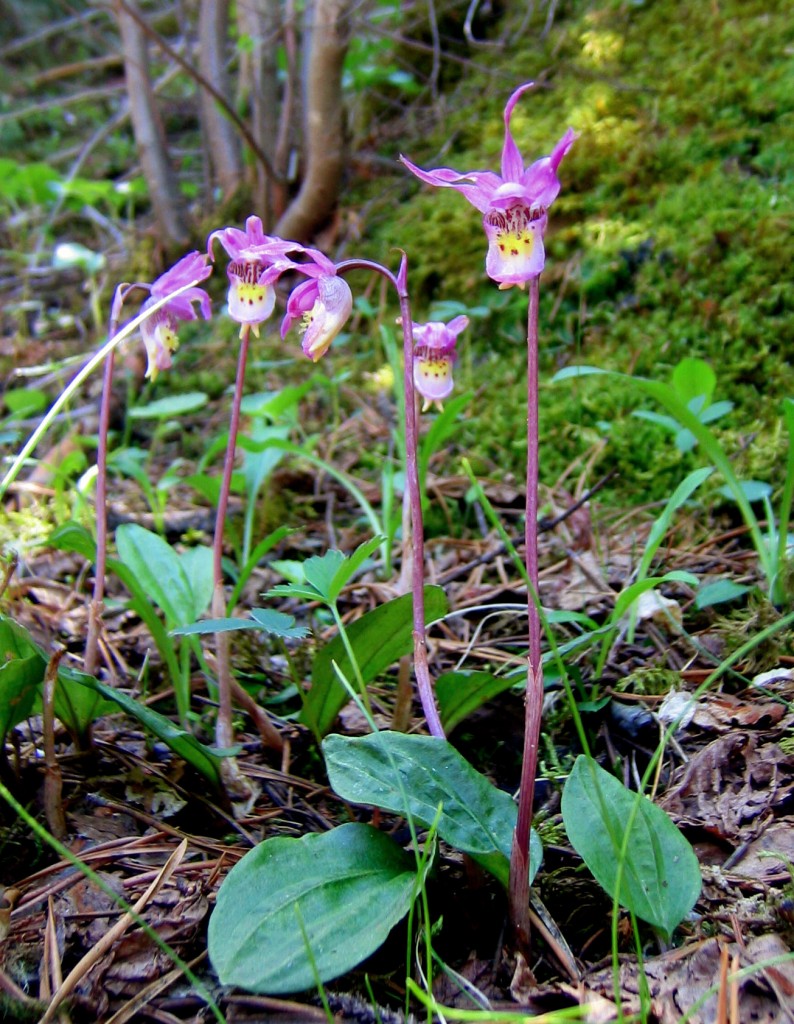John Muir—I learned this week—was an avid lover of calypso orchids (Calypso bulbosa or Calypso borealis). He discovered them in his twenties in Ontario, Canada, where he was knocking about working as an inventor in a factory and “botanizing” on the side—wandering through woods and wetlands trying to identify and collect plants.
One day, while exploring a mossy swamp, he came upon a flower that filled him with rapture. Here is how he described the moment in a letter to a friend:
I never before saw a plant so full of life, so perfectly spiritual. . . . I felt as if I were in the presence of superior beings who loved me and beckoned me to come. I sat down beside them and wept for joy. Could angels in their better land show us a more beautiful plant? How good is our Heavenly Father in granting us such friends as are these plant-creatures, filling us wherever we go with pleasure so deep, so pure, so endless.
This letter was whisked away by the recipient and sent off to a magazine so that in 1866, when Muir was twenty-eight, it became his first published work. Readers admired his love of nature and began to compare him to Thoreau.
The biographer who quotes the early letter, Stephen J. Holmes, notes that though the framework is traditionally Christian (Muir was brought up a Scottish Presbyterian), Muir was already beginning to think along different lines. He was finding communion among “plant-creatures,” “superior beings” who could show their intelligence through loving and calling humans into relationship with them.
Much later in life, when he was seventy, Muir elaborated on the moment. He wrote that he had been slogging through the swamp the whole day, “struggling through tangled drooping branches and over and under broad heaps of fallen trees” and afraid he would not find dry ground before dark:
But when the sun was getting low and everything seemed most bewildering and discouraging, I found beautiful Calypso on the mossy bank of a stream, growing not in the ground but on a bed of yellow mosses in which its small white bulb had found a soft nest and from which its one leaf and one flower sprung. The flower was white and made the impression of the utmost simple purity like a snowflower. No other bloom was near it, for the bog a short distance below the surface was still frozen, and the water was ice cold. It seemed the most spiritual of all the flower people I had ever met. I sat down beside it and fairly cried for joy.
The variety he found was white (I’ve never seen one of these). It moved him profoundly. And now, late in life, Muir’s early hints of intimacy with plants have blossomed into full-fledged relationships with “flower people.” He has crossed over into regarding the Earth and its creatures as alive and aware, able to be companions and friends.
Those, like me, who have also come to love calypsos, can easily identify. Every time I visit calypsos, I feel a special sense of presence. It started in California, where when I discovered them each spring I was often moved to break into singing (something I do only in the shower, and only rarely). How else to express the special quality of joy one can feel in their presence? I was delighted to discover this week that John Muir gave words to it a century and a half ago.
For more information:
- Muir’s early letter is quoted in Stephen J. Holmes, The Young John Muir: An Environmental Biography (Madison: Univ. of Wisconsin Press, 1999), 139.
- Muir’s much later description of the moment comes from The Life and Letters of John Muir,edited by William Frederic Badè. It was published in 1924 after Muir’s death. The passage is online here.
- For a new look at animism, the worldview seeing all of nature as awake and aware and carrying out relationships, see Graham Harvey, Animism: Respecting the Living World (New York: Columbia Univ. Press, 2005).
- I am reading next a new look at plants from the point of view of animist philosophy, a brand-new book that came out at the end of May: Matthew Hall, Plants as Persons: A Philosophical Botany (Albany: State University of New York Press, 2011).
- My own book, Kissed by a Fox: And Other Stories of Friendship in Nature, will be published next summer by Counterpoint Press in Berkeley, CA. Update: More about the book at kissedbyafox.com.
